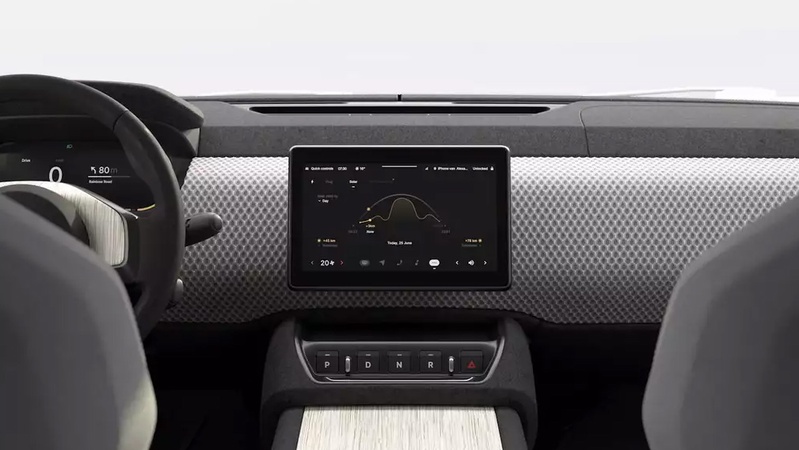The Dutch startup Lightyear was founded by graduates of the Technical University of Eindhoven. The idea of ??an electric car with solar panels appeared in 2016, in 2017 the authors of the project showed the first sketches of the future electric car, in 2019 they presented a pre-production prototype of a liftback Lightyear One, and now the light saw the car in serial form - Lightyear 0, where 0 means Zero ("Zero").



Length x width x height: 5083 x 1972 x 1445 mm. Weight - 1575 kg. Clearance - 183 mm. Trunk volume - 640 l.
Lightyear 0 differs from Lightyear One both in technical improvements and in a number of changes in design and construction. The liftback received redesigned bumpers, new headlights and taillights, an illuminated emblem, new door handles, side cameras moved from the doors to the front fenders, and new aerodynamically designed wheels. The exterior body panels of a car are made from recycled materials that would otherwise go to waste.
Changes inside are minor and include the addition of two front fascia vents, a new center display and the addition of drive mode switch buttons on the center console. The interior features plant-derived leather, fabrics from recycled plastic bottles and rattan wood trim.


Lightyear 0 accelerates from 0 to 100 km/h in 10 seconds. Top speed is limited to 160 km/h.
With a 60 kWh battery, the Lightyear 0 has a claimed WLTP range of 625 km (388 miles). At the same time, solar panels installed on the roof and hood with a total area of ??five square meters, according to the developers, provide an additional 70 km (44 miles) of mileage per day. This figure is achievable in cloudless weather in spring and summer in southern Spain. Therefore, the fewer sunny days where you are, the less shareware electricity your Lightyear 0 will receive.
In terms of charging, the startup says the Lightyear 0 ideally requires no plugging in for two months with an average run of about 35 kilometers (22 miles) a day, or up to seven months in sunnier countries.


The diagonal of the central touchscreen is 10.1 inches. The system runs on Android Automotive operating system
The company also claims that in June 2022, one of the production Lightyear 0s drove 560 km in track mode, moving at a speed of 110 km/h. However, it is more efficient to operate an electric car in urban environments. So, in the home-work-home mode, when the daily mileage does not exceed 50 km, the mileage between charges can exceed 1000 km.
Lightyear is already taking orders for its solar-powered electric vehicle, which will begin production this fall in Finland. First deliveries are expected in November in Europe. Prices start at €250,000 ($265,000) excluding VAT, but the company is already promising a smaller, more affordable Lightyear Two for €30,000 tentatively in 2025.
Source: Lightyear

